For over 3,000 years, there have been nomadic people living on the Mongolian-Manchurian steppe. If you get the opportunity, staying with these nomadic Mongolian families is one of the best ways to learn about their culture and make some new friends.
It provides a valuable insight into how they live, while holding on to their traditional ways.
The steppe is the massive ecoregion that stretches from Bulgaria, Romania, and Moldova, through the Ukraine, Russia, Kazakhstan, Xinjiang, and Mongolia to Manchuria.
In the 19th century, an advancing Russian Empire pushed the nomadic Kazakh people east, where they would spread out further across it.
It was the Middle Jüz Kazakhs who settled in what is now present-day Western Mongolia where they have lived in an isolated, tightly knit community for most of the 20th century.
The first nomadic Mongolian family I would be staying with were Kazakhs living in the section that is known as the Eastern Steppe. Or even more specifically, The Mongol Steppe, which includes both Mongolia and the Chinese province of Inner Mongolia.
A Fresh Adventure – Staying with Nomadic Mongolian Families
The morning of my departure, I woke up in Ulaanbaatar excited for something new. I’m all about fresh experiences, and while I have been traveling for years and have met people from many different cultures, I’ve never actually stayed with anyone in their home to experience day-today life.
Traditionally, pastoral nomads, the Kazakhs, dwell year-round in portable, dome-shaped tents called gers which are constructed of a wooden frame that is wrapped with skins or wool felt. These keep them well protected from the wind.
While the most common term for their dwellings is a yurt, Mongolians themselves use ger and don’t appreciate it being called a yurt as the word has Turkish origins.
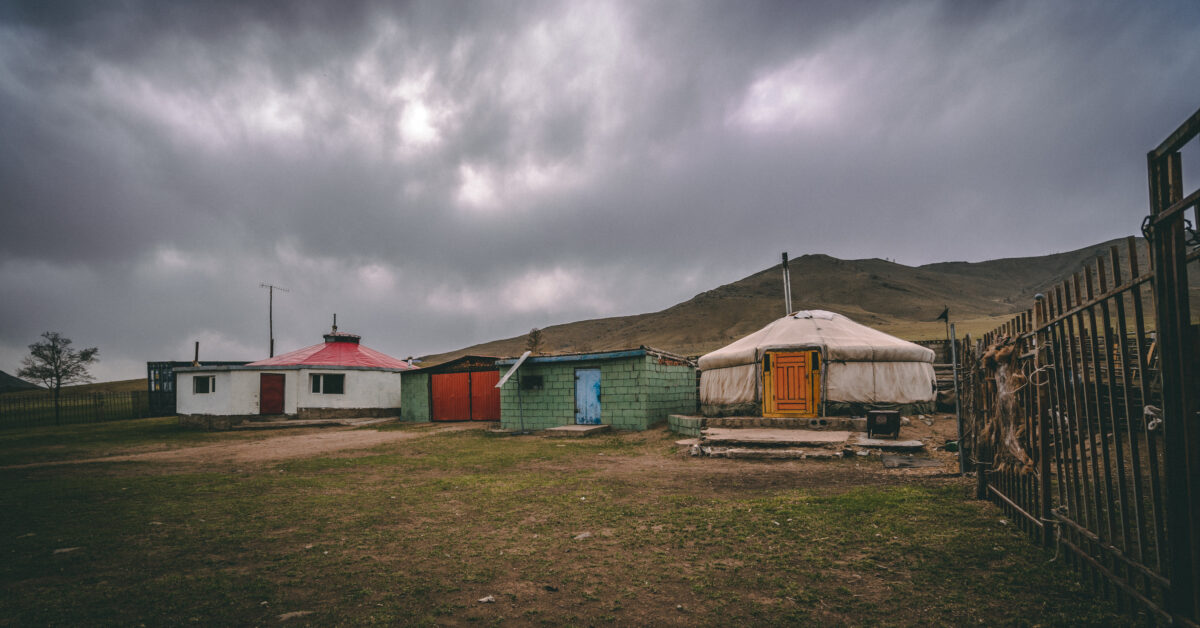
Yurt translates to “Sleep Stay” in Turkish, and ger means “House” in Mongolian.
Kazakhs still following the nomadic way of life migrate seasonally to find pasture land for their livestock which includes sheep, goats, yak, cattle, and camels.
While I visited, the family that I stayed with was preparing to move from their hill shielded winter site to a more open summer location.
On the Move
The start was reasonably early, up and out the door by 8 AM. Everyone piled into a car, and it was off to the first destination. After several stops to see a handful of sights along the way such as turtle rock and a remote monastery that the group accessed via horseback, it was back in the car for another hour or two. I’m not sure how far we drove over the course of the day, but it was probably around five hours.
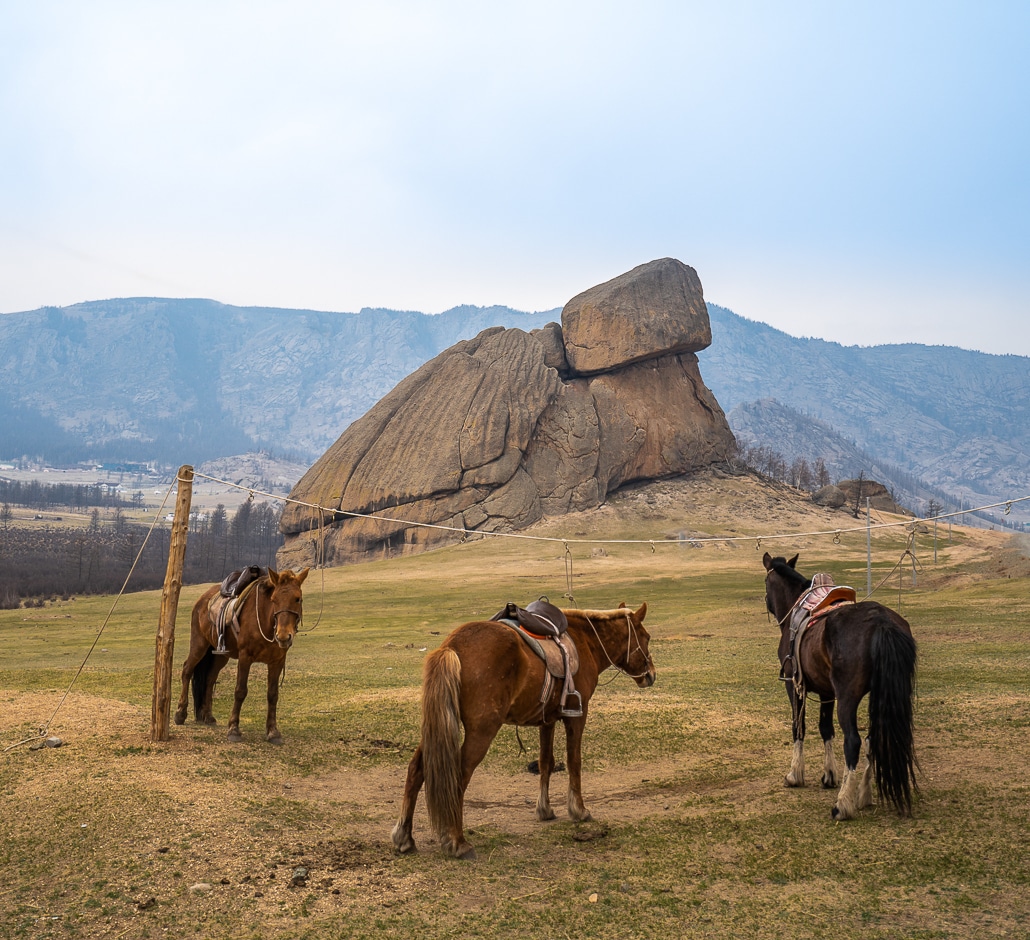
Turtle Rock and some horse butts.
As we were driving through the steppe, there was nothing that suggested we were nearing our destination. Occasionally we would pass a herd of sheep or goats and a stray ger here or there. That’s why the turn caught me so by surprise.
Our driver turned off the road seemingly at random, with no tracks or signage indicating where we might be going.
But why would there be? This is, after all, a nomadic Mongolian family. We then bumped and bounced our way along nothing but grassland in a car clearly not designed for being off-road when about thirty minutes later, we pulled around a hill and up to a small group of buildings.
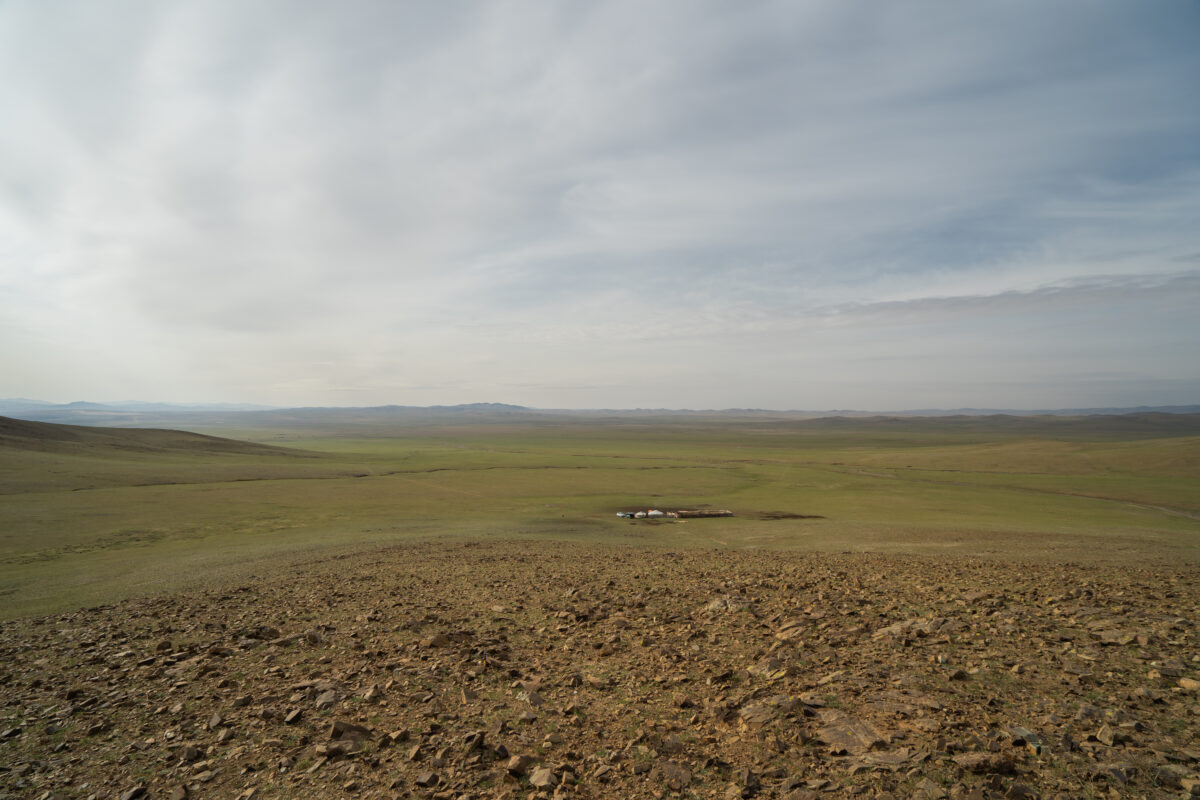
If you like being alone, staying on the steppe is certainly remote!
The Farm
I don’t know if farm is the right term for their home, but that’s what it felt like.
We were met out front by a grumpy sheepdog who didn’t like me petting his puppy. We then worked our way in through the gate. They didn’t speak much English, but we were able to make greetings and generally understand what each other meant.
After pleasantries, we shared a traditional glass of suutei tsai (Mongolian milk tea) and some boortsog (Mongolian butter cookies). They then gave us a tour of the area.
The compound was larger than I expected, with two gers, a fenced-in yard, and a stable area where the sheep and goats slept at night. It was in the smaller of the two gers where I would be sleeping.
Bags stored, of course the first thing I wanted to do was explore. So as soon as I was left on my own, I took off to see what was beyond the surrounding hills.
To do this I had to fight my way through a massive flock of sheep and goats. And by fight, I mean simply look in their direction to scare them away.
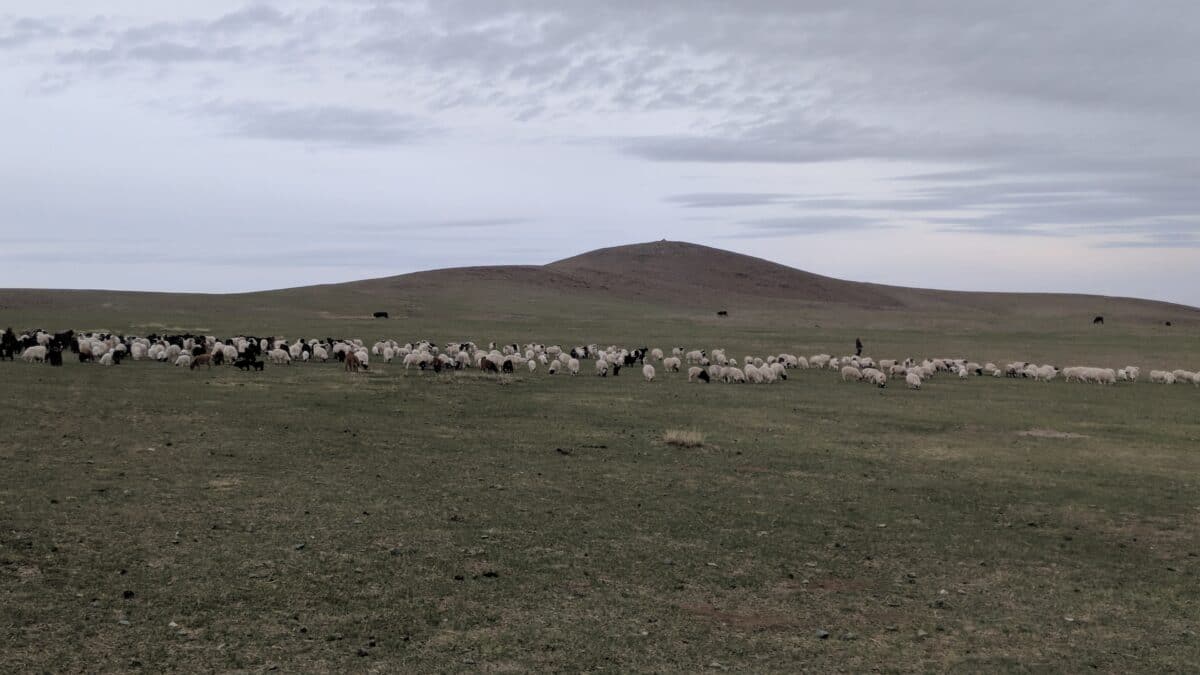
The sheep and goats keeping their distance from me.
I couldn’t get within twenty feet of them!
I tried to get close, but it was like a wave of fluffy bodies that parted as I passed through. One can only imagine that it would have looked pretty cool if I had my drone up.
A short but steep and rocky hike later, and I was at the top of the hill for what I hoped would be an epic view.
It turned out to be a lot of brown and green grass in every direction with little else. This was the steppe, and it looked exactly like one would expect. I was, however, afforded a great view of the farmer tending his flock.
After he was done, I sat on a rock to wait for the approaching sunset.
So naturally, I was called down for dinner about an hour before it set.
Under normal circumstances, I would have skipped dinner for the sunset, but this family had allowed me into their home, so down the hill I went. There would be other sunsets.
Amusingly, my phone provider is Google Fi which passes through a deadzone on the majority of my drive to work. Yet on top of this hill, I got service and a live text from a coworker, who, to this day, likes to make fun of how he can’t call me two miles from where we work, but he can reach me in the middle of a Mongolian grassland.
I’m telling you, Google Fi is the best phone service for international travel! I’ve been to 45 countries and I’ve only ever needed to buy a SIM card once.
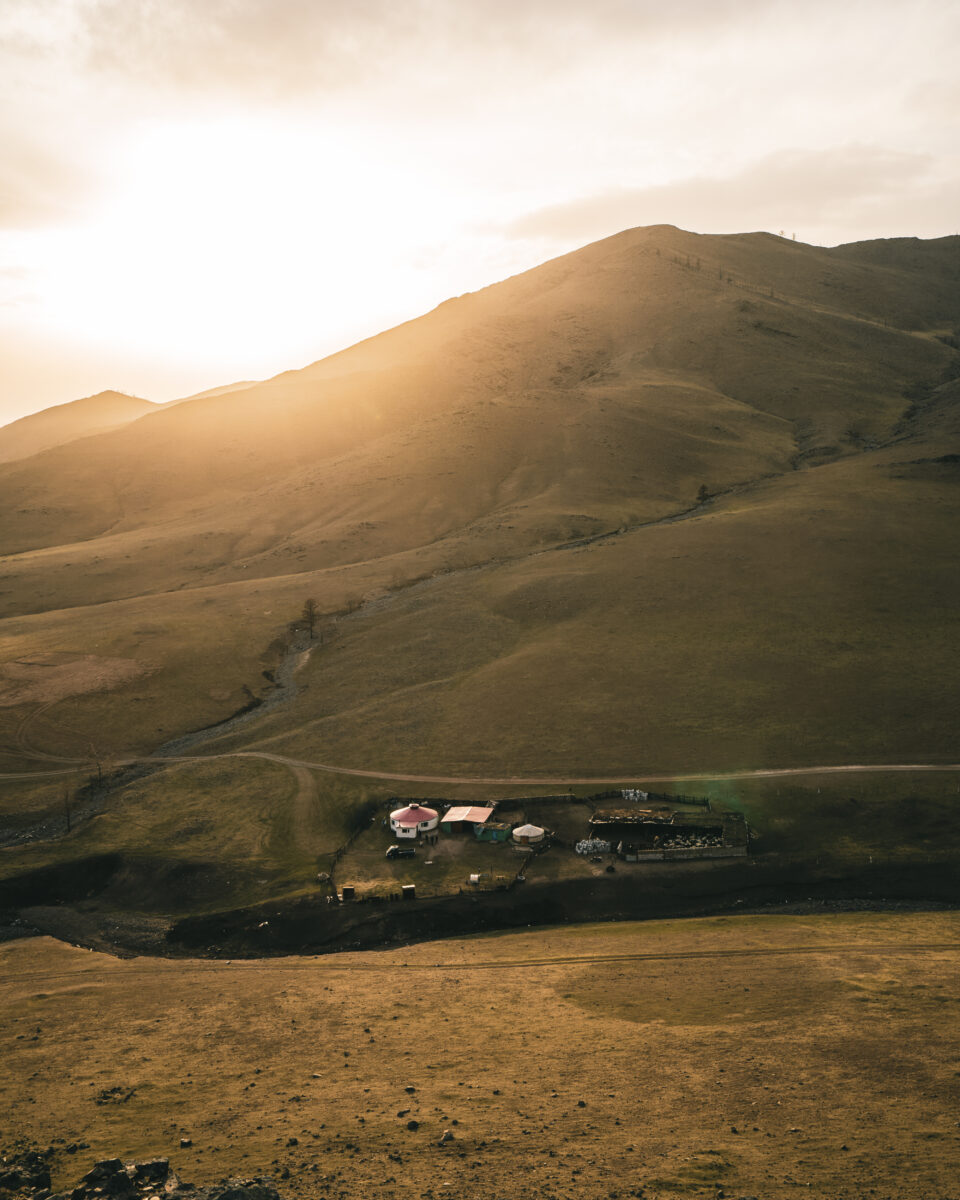
Start of the sunset but I was already headed back down!
Dinner
Lunch and dinner were the same with both families that I visited. Called Tsuivan, it was a traditional stew consisting of homemade noodles, some kind of meat, cabbage, onions, and carrots. The meat was either goat, sheep, or beef but cows aren’t nearly as common as the other two, so don’t expect beef.
I did ask what it was, and every time, I got the same answer. “It’s meat.” The meat was always dried, but the occasional white hair made me think it was goat.
It’s probably best if germophobes don’t watch it being prepared. I’d also avoid looking too closely at it once it’s time to eat. Remember, they butcher the meat themselves.
The noodles are made by rolling out dough and cooking it like a giant tortilla on top of the center stove. They were then stacked on top of each other and sliced into ribbons before everything went in a large metal bowl for further cooking. So don’t expect noodles in the traditional Italian sense.
Vegetarian options were available on request, but that was just a bigger bowl of noodles without the meat.
Expect a very large serving and unwanted refills; It became a battle trying to explain that I was full after my second bowl. I lost and had a third.
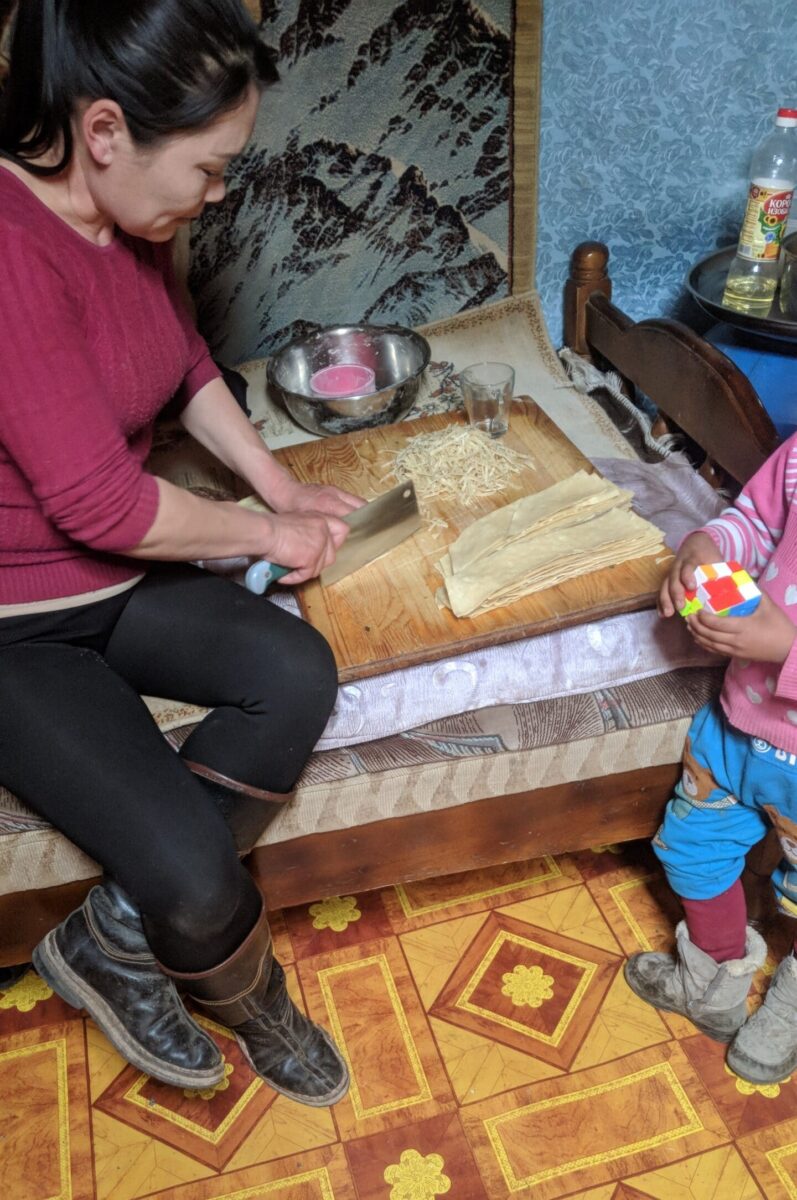
Cutting us up some noodles while her daughter looks on.
Family Fun Time
After dinner, the farmer’s youngest son played the topshur for us, which is a two-stringed Mongolian instrument similar to the lutes of Tuva, Altai, or Kazakhstan.
Then everyone played a shagai game called Horse Race with the farmer’s daughter. She won; I came in last both games!
Shagai are the ankle bones of either sheep or goats that are used as game pieces or for fortune-telling. I ended up buying a set after making it back to Ulaanbaatar.
Once the games were over, it was outside to help herd the flock into the pen for the night. This took a little longer than normal as it is normally done by horse or motorcycle.
Instead, we got to help on foot which quickly turned into the farmer sitting down and watching the animals ignore us.
It took way longer than normal, but after we finally got them all rounded up and they were locked in for bed, it was time for us to follow suit.

Meeting the family!
Goodnight Everyone!
Bedding down in a ger is a unique experience. Like in their main dwelling, there was the central stove that vents through a chimney pipe.
The dung-fed fire provided an insane amount of heat, while the thin walls kept us protected from the wind. However, when it came to keeping the inferno inside, that was a different story.
It was so hot inside that I had to leave the door open a crack. I would never have been able to fall asleep otherwise. It was a big mistake! The family’s main ger was just as hot. I would later find out from my guide that this is done on purpose. Dung doesn’t burn all night, so by getting it super hot, the inside stays warm for far longer.
I woke up freezing since I let all of my heat escape while the main ger was still slightly warm.
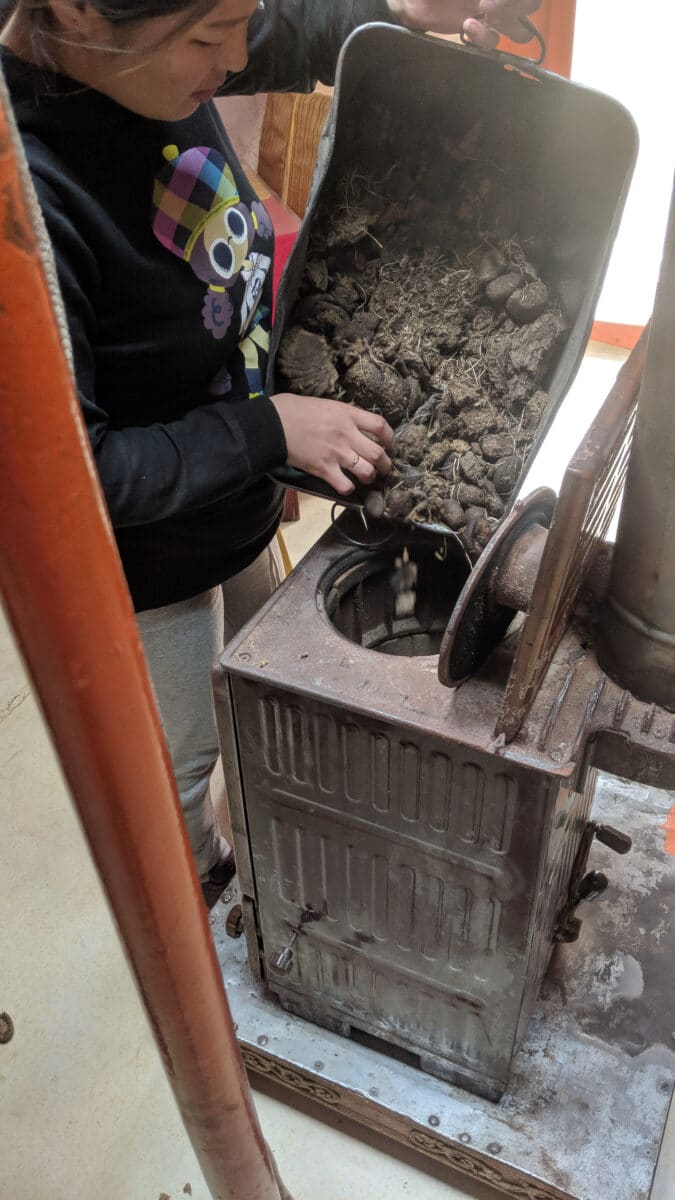
A dung fed fire to keep us warm for the night!
Wrapping things up on the Mongolian steppe.
After a cold and uncomfortable night’s sleep, like on most farms, morning comes early. It was barely light out when I went outside, and the sheep and goats were already gone.
I had hoped to get a few pictures of them with the sunrise, but they were off grazing somewhere new.
After a breakfast of eggs (I hate eggs) which I fed to the dogs while I thought nobody was looking (they all watched!), it was time for goodbyes. I gave their daughter my green apple which she was very excited about.
I hadn’t thought of it, but I wish I had brought a gift for her. Apparently, giving small gifts is a common practice, but all of my souvenirs were left behind in the hostel. Had I known, I would have brought her one of the stuffed wool goats I had purchased. One of the same goats that helped get me into Russia after being heavily questioned by some suspicious military folks …but that’s a story for another day.
The second family I stayed with had pretty much the same routine, but their ger was much smaller. They only had one, and everyone slept in it together. And while the first ger I stayed in had raised cushioned areas for sleeping, in the second, it was just, “Pick a spot on the floor.” Luckily nobody snored.
I left my nights of staying with nomadic Mongolian families with newfound respect. Not only have they managed to hold onto their culture in the face of advancing civilization, but their lifestyle is also quite difficult. I couldn’t imagine packing up my entire household and moving everything I owned several times per year.
When visiting Mongolia, please be sure to experience life as they see it. And don’t forget gifts for any children!
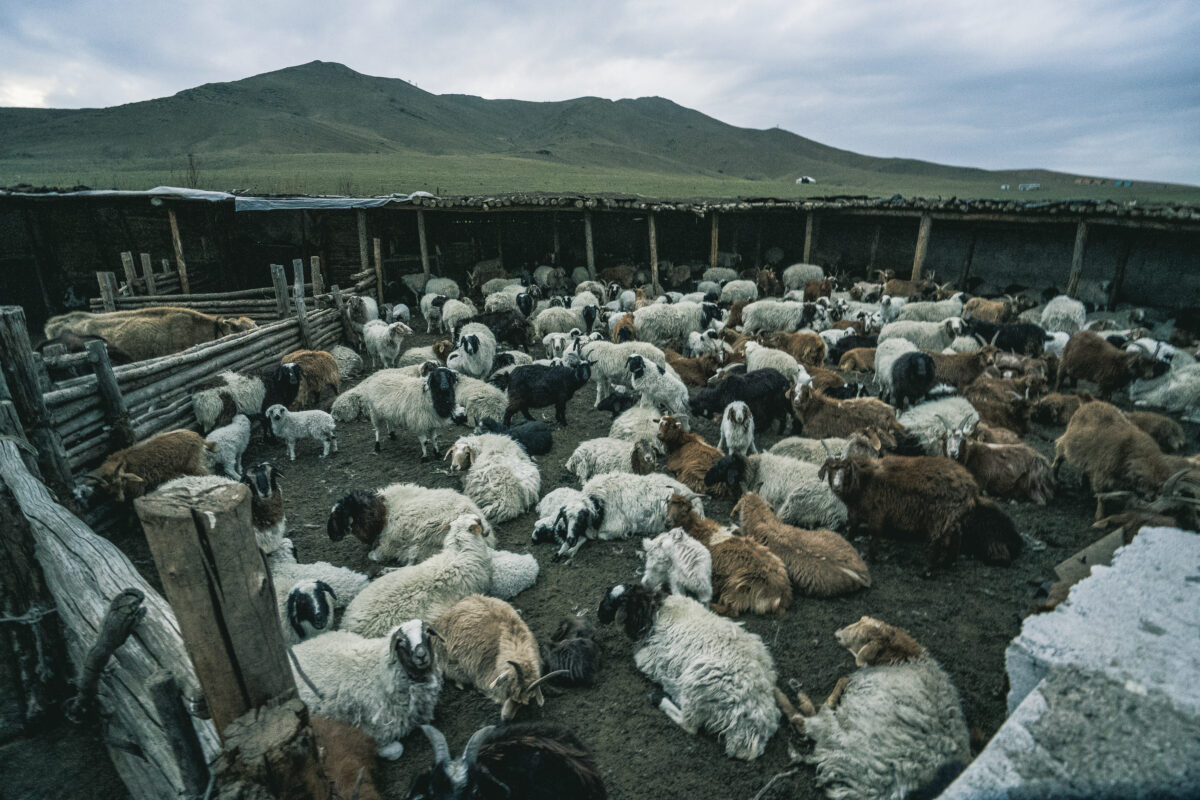
Unfortunatly, wolves have been hunted pretty heavily in the area so these guys are safe. The fence is more to keep them from wandering off.
The cost of staying with a nomadic Mongolian family.
As per usual, the tour for staying with Nomadic Mongolian families is cheaper when booked in person. While it included other activities such as the wild horses of Khustai National Park and the mountains of Terelj National Park, I saved an average of $50 per person over booking online.
I probably could have saved even more had I shopped around rather than booking through my hostel, the Golden Gobi, which now seems to be closed.
This tour specifically ran me $85.00 per person for one night of staying with a Nomadic Mongolian family. I did three nights, but the other two were included as part of my Trans-Mongolian tour package. Unfortunatley, due to COVID, this doesn’t currently seem like a bookable option.
Remember, tips aren’t included. For tips, $10-$20 per person per day is considered standard for the driver and guide.
Driving through the steppe is hard on their vehicles. The distances are great, and the terrain is often uneven, so try keeping it on the high end if possible.
Personal opinion: If the driver is also the guide, tip extra as they’re doing twice the work. I felt bad and ended up way overtipping after he got his car stuck in the middle of a river! It was not a very convenient place for us to be stranded, and boy was that water cold!
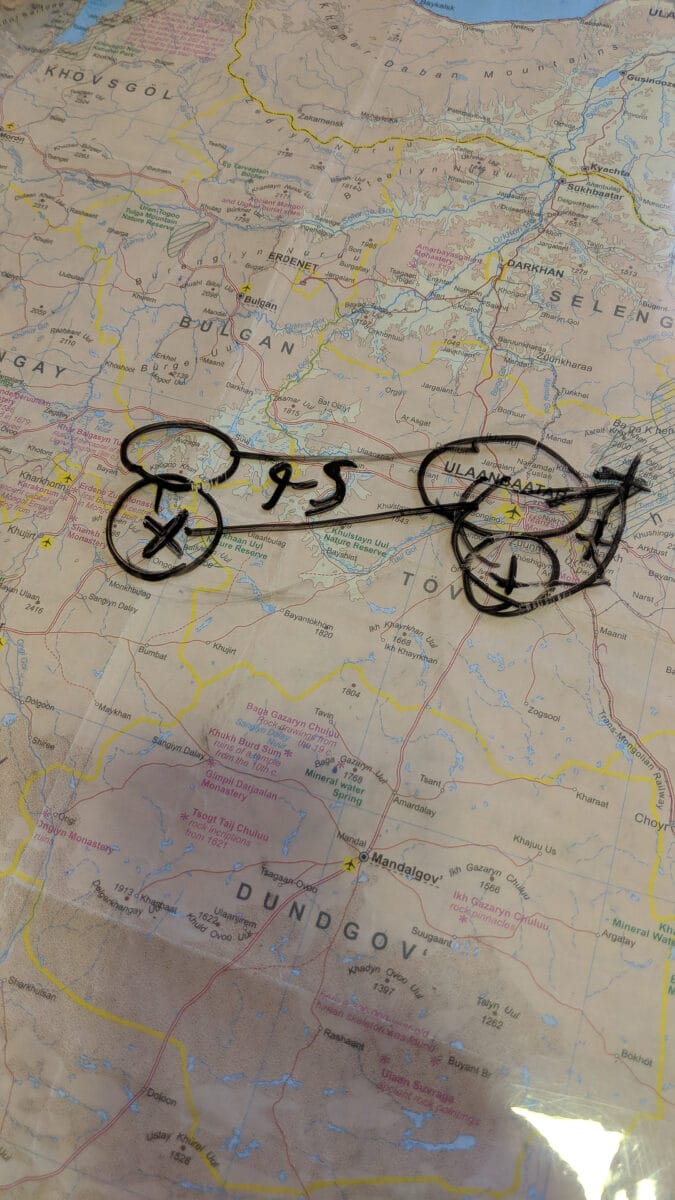
If you were wondering about the route I took around Mongolia, this is the map that one of the guides drew for us. Uhhhh?
What an adventure!
Staying with nomadic Mongolian families on the steppe is fascinating yet, at the same time, sad. The area is full of beauty and ancient culture while lacking the bustle and crowds of some of the more popular destinations.
I say sad because I could see the push of civilization against them, and they seemed to want little to do with it.
Unfortunately, trash and litter are also always present. On the drive there, most roads were lined with lots of garbage that people had apparently thrown from their car windows. Given the lack of vehicular traffic, this had to have collected over many years. Then, of course, there’s the ever present cloud of smog over Ulaanbaatar.
It may be hours away, but the industrial machine is there.
Hopefully, these peaceful people can continue living how they have been for years to come.
DID YOU ENJOY THIS ARTICLE? PIN IT!
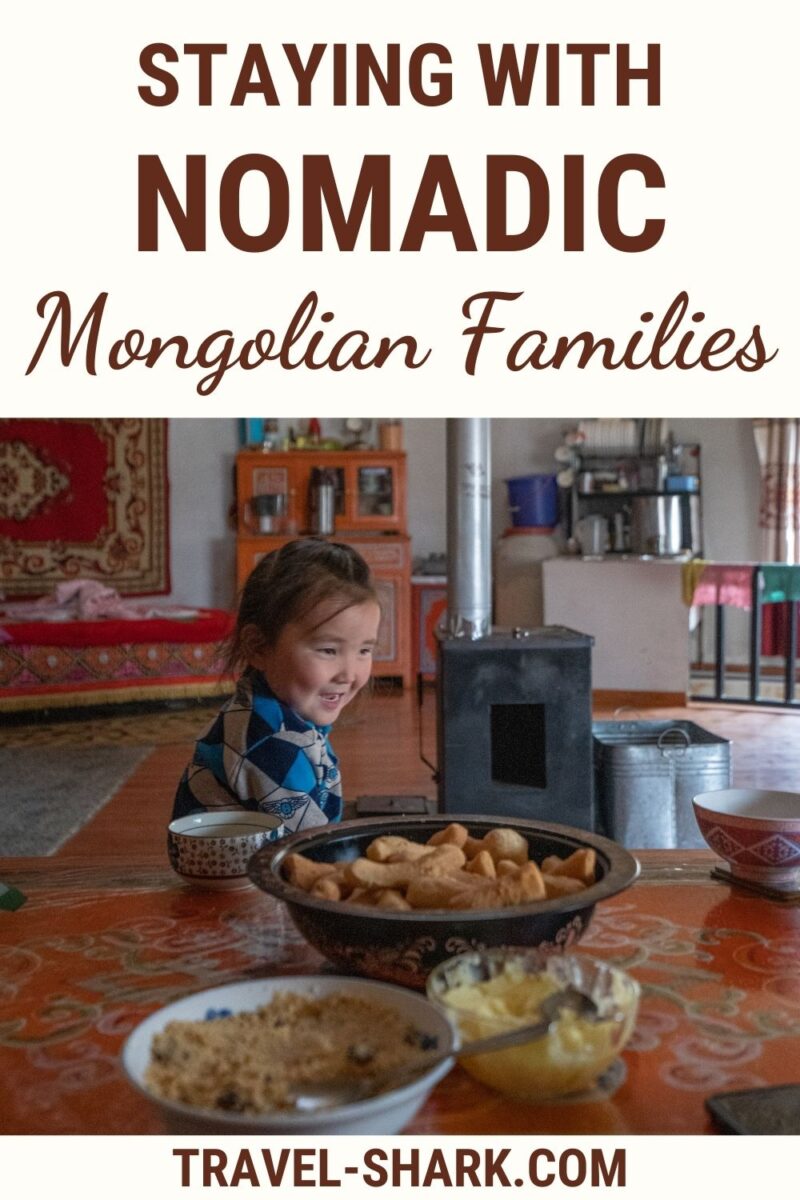

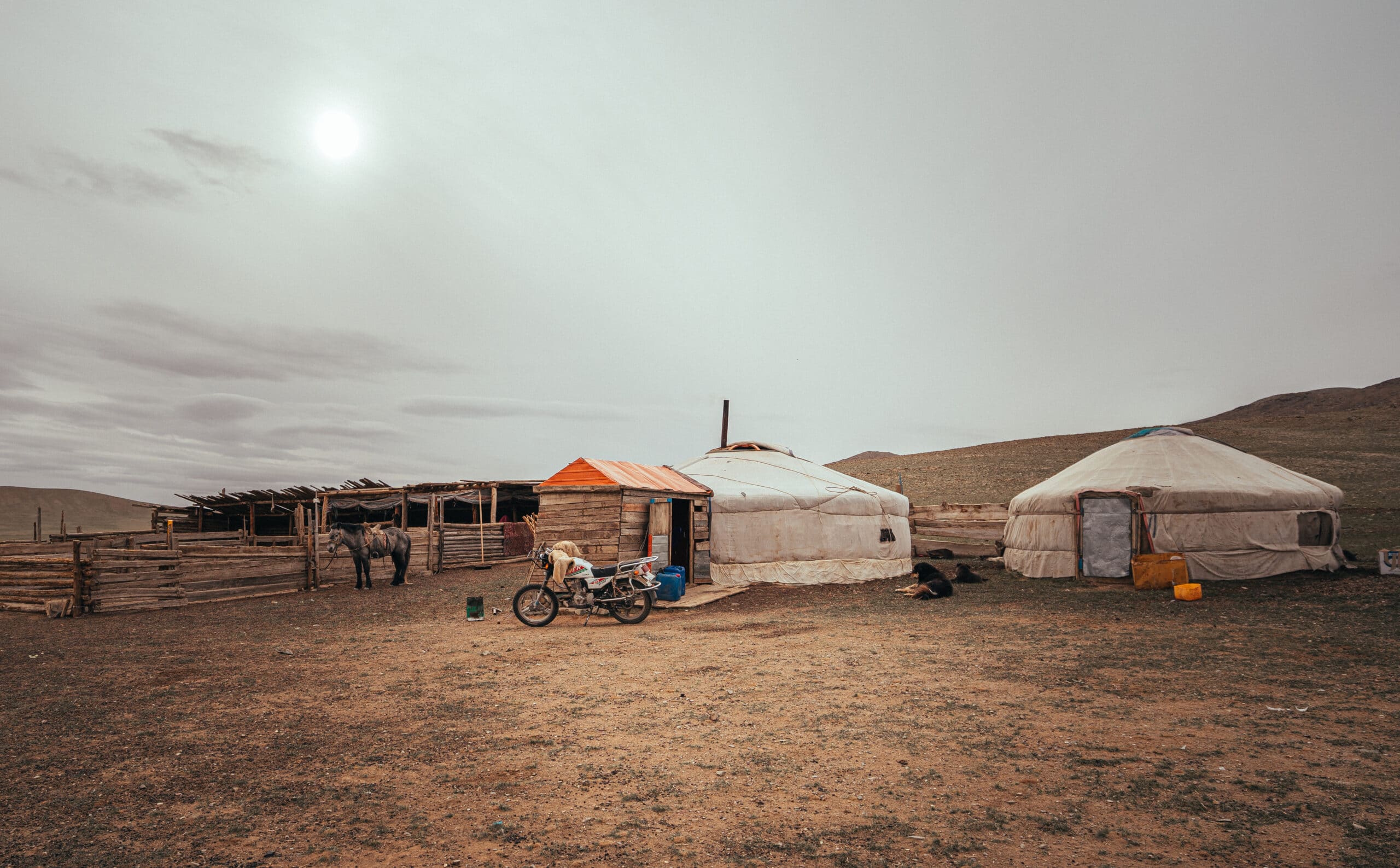
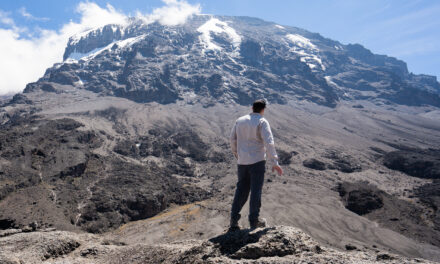
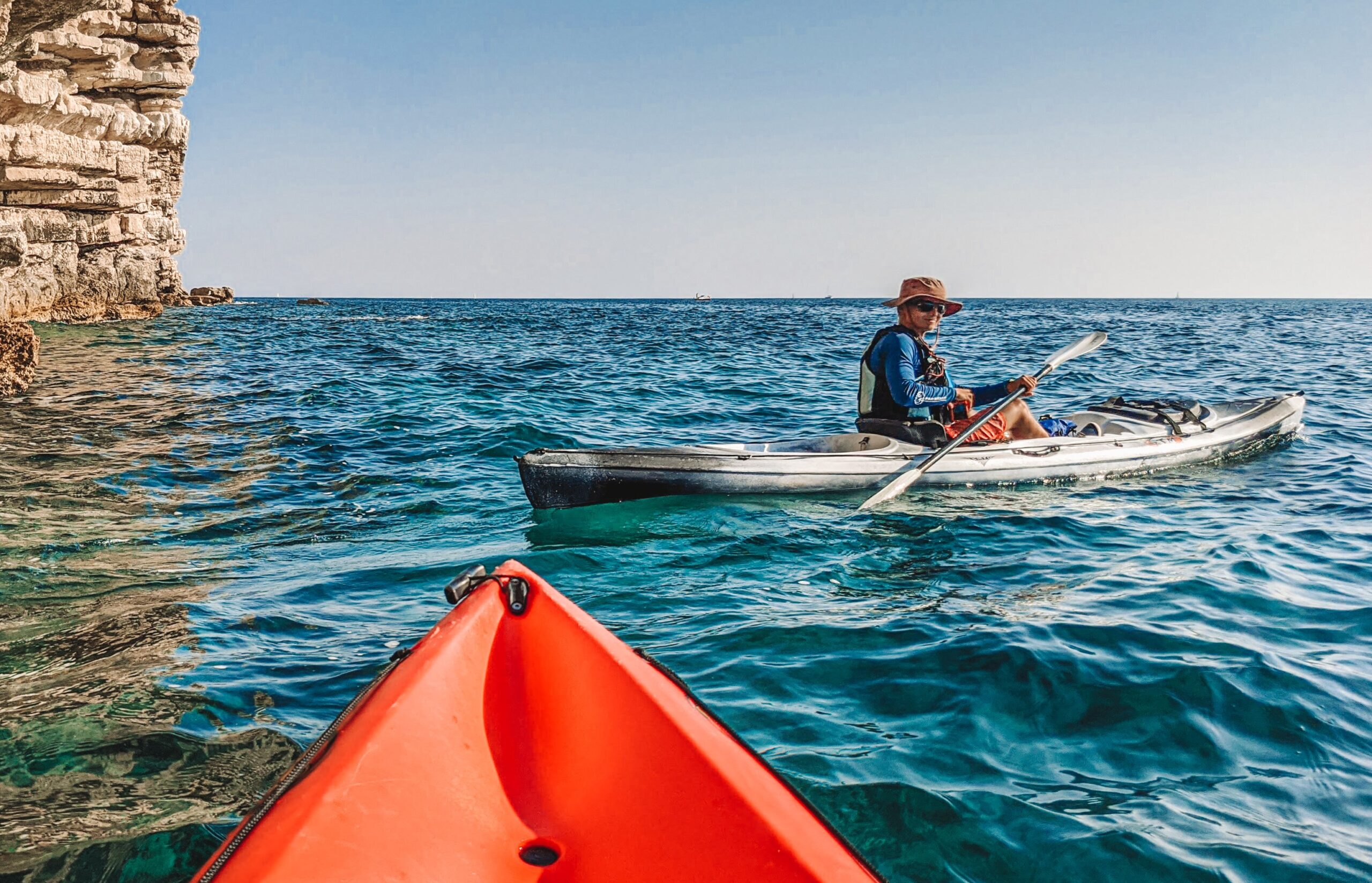
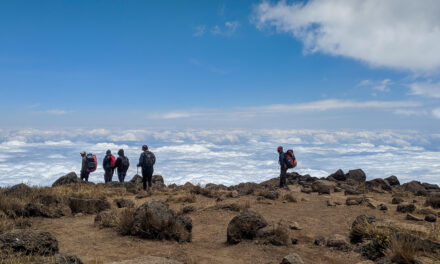
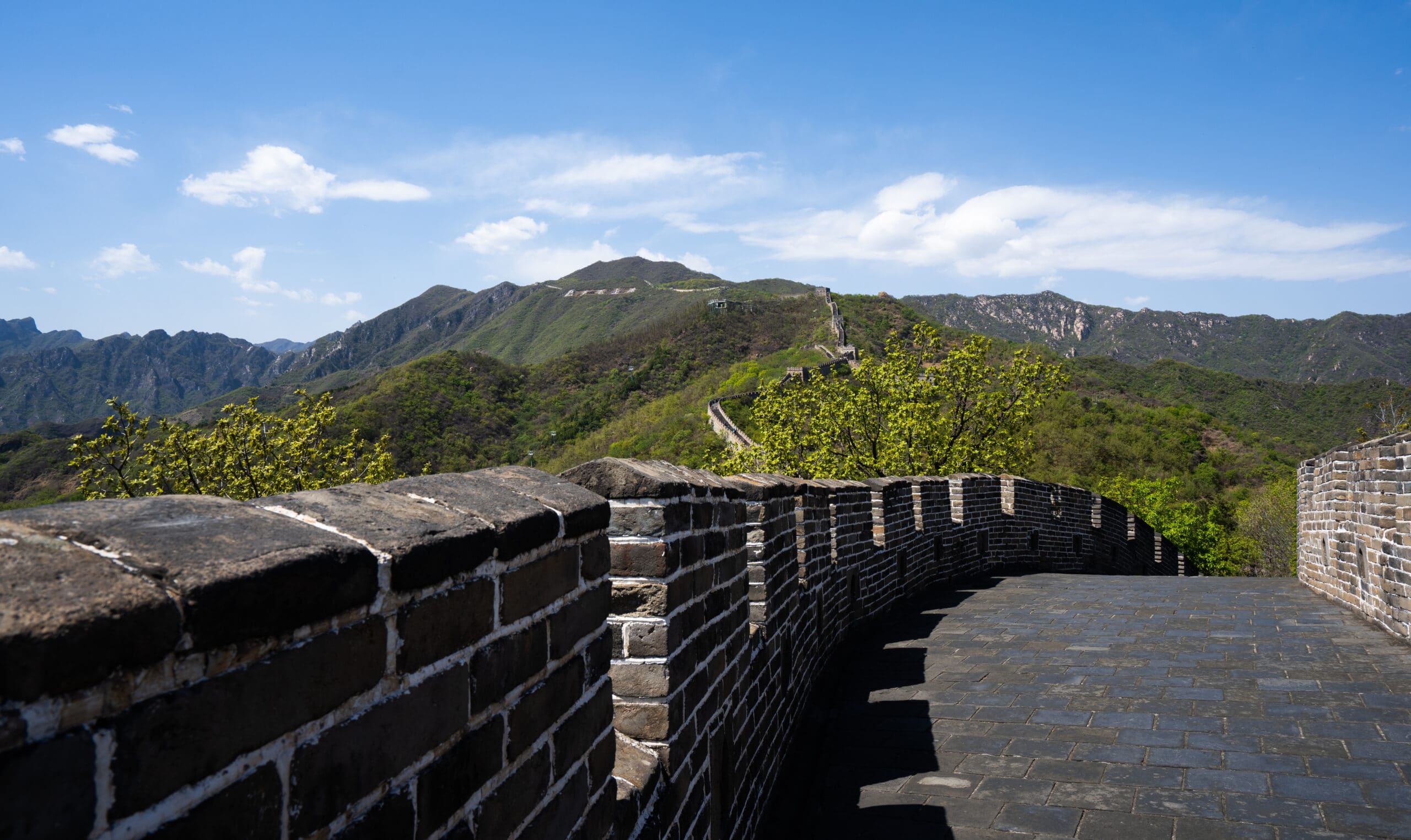

Interesting experience, thanks for sharing! I don’t think we’ll go for it but you described it so well, that I feel like I’ve been there.
You’re welcome! Yea this one is a bit out there but if the opportunity ever arises, I’d definitely recommend it!
[…] “Souvenirs from Mongolia.” […]